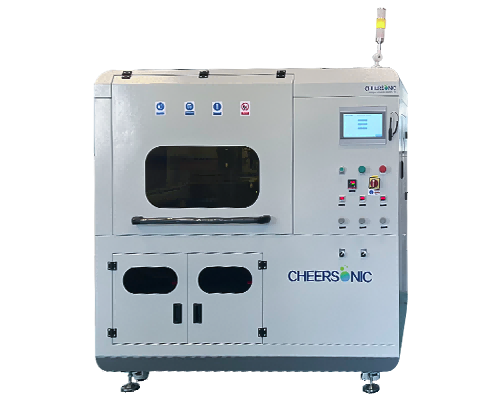Ultrasonic Spraying of Porous Carbon Felt Electrodes
Application and advantages of ultrasonic spraying in porous carbon felt electrodes
In the complex operating system of the battery, the flow of electrolyte plays a vital role. It is like a tireless “courier” responsible for accurately delivering reactants to the surface of carbon fibers. The key factor of electrode thickness, like a “switch”, determines the specific way in which the electrolyte is delivered to the electrode surface. Currently, there are two main delivery modes: direct flow-through mode and surface flow-by mode.
The choice of liquid supply method is not arbitrary, but requires a comprehensive balance between the two key aspects of reactant transport and flow pressure drop. When the reactants “rush” from the electrolyte to the surface of the carbon fiber in the porous carbon electrode, the two effects of convection and diffusion are like a pair of “partners” and play an important role. In the direct flow-through liquid distribution method, convection can be called the “main force” of reactant transport and occupies a dominant position. For example, just as a turbulent river can quickly transport ships on the river surface, convection can quickly bring reactants to the surface of carbon fibers. In the surface flow-through type of liquid preparation, the reactants mainly rely on the diffusion caused by the concentration difference to slowly “cruise” from the electrolyte flow channel to the carbon fiber surface, just like a boat on a calm lake, relying on the slow push of the water flow.
Undoubtedly, for ions in liquids, convection can deliver reactants to the carbon fiber surface in a faster and timely manner than diffusion, just like sprinters and long-distance runners. However, this process is not without cost. When the electrolyte flows through the porous electrode, it will cause a significant flow pressure drop, just like the pressure loss of water flowing through a narrow pipe. Fortunately, for carbon felt electrodes, their millimeter-level electrode thickness is like a “cushion”, which can alleviate this contradiction to a large extent. For this reason, carbon felt electrodes are mostly used in practical applications. In sharp contrast, the thickness of carbon paper is less than 500μm. Such a thin thickness makes the flow pressure drop caused by the direct flow-through liquid preparation method cause the pump work loss to a completely unacceptable level. However, since the transmission distance of reactants in carbon paper is relatively limited, the surface flow-through type liquid preparation method relying on diffusion transmission can meet the supply demand of carbon paper for reactants.
In the preparation and optimization process of porous carbon felt electrodes, Cheersonic’s ultrasonic spraying technology has shown extraordinary value. In the field of porous carbon felt electrodes, ultrasonic spraying technology has a unique application method. It can accurately atomize specific functional materials, such as nanoparticle solutions that help improve electrode performance, into extremely small and uniform droplets through high-frequency vibration of ultrasound, and then evenly spray them on the surface of porous carbon felt electrodes.
The advantages of this technology are very significant. First, it greatly improves the uniformity of the coating. Traditional coating methods may cause uneven distribution of functional materials on the surface of carbon felt electrodes, thereby affecting the consistency of electrode performance. Cheersonic ultrasonic spraying technology allows the functional materials to be evenly covered by precisely controlling the atomization and spraying process, so that the carbon felt electrode can perform stable and efficient performance in all parts. Second, ultrasonic spraying technology can accurately control the thickness of the coating. Different battery application scenarios have different requirements for electrode coating thickness.
Cheersonic’s ultrasonic spraying system can accurately control the spraying amount according to preset parameters, achieve precise control of coating thickness, and ensure that the electrode can achieve optimal performance under different working conditions. Third, from a cost perspective, this technology wastes very little material during operation. In battery production, many functional materials are expensive. Cheersonic ultrasonic spraying technology uses precise spraying control to make full and effective use of materials, greatly reducing production costs and providing strong support for large-scale production of high-performance porous carbon felt electrodes.
In short, in the field of batteries, it is crucial to understand the liquid preparation method under different electrode thicknesses, and the application of Cheersonic’s ultrasonic spraying technology in porous carbon felt electrodes has opened up a new path for improving electrode performance and reducing costs, and is expected to promote the continuous development of battery technology towards higher performance and lower costs.
About Cheersonic
Cheersonic is the leading developer and manufacturer of ultrasonic coating systems for applying precise, thin film coatings to protect, strengthen or smooth surfaces on parts and components for the microelectronics/electronics, alternative energy, medical and industrial markets, including specialized glass applications in construction and automotive.
Our coating solutions are environmentally-friendly, efficient and highly reliable, and enable dramatic reductions in overspray, savings in raw material, water and energy usage and provide improved process repeatability, transfer efficiency, high uniformity and reduced emissions.
Chinese Website: Cheersonic Provides Professional Coating Solutions


